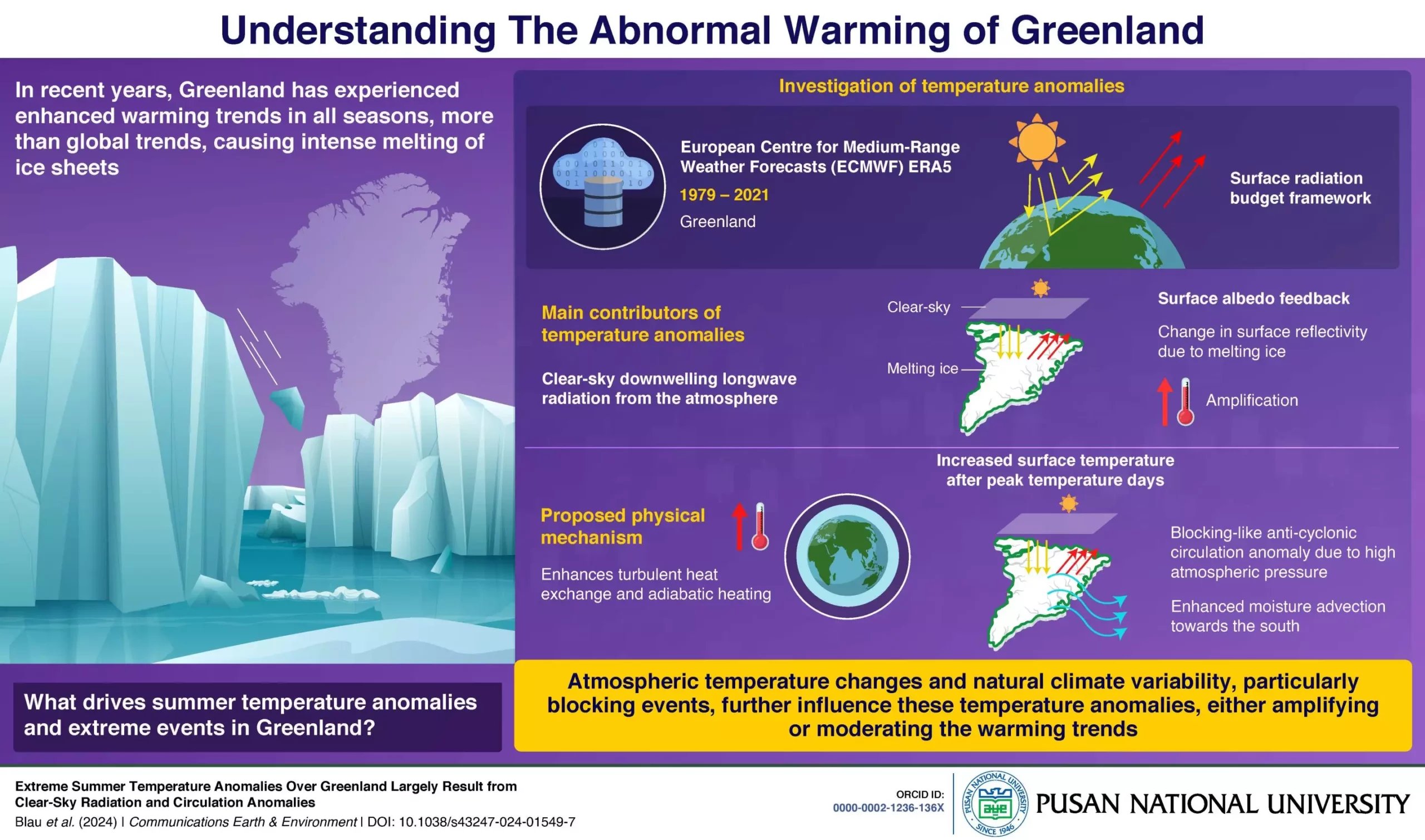Global warming, driven by human activities, has resulted in rising average temperatures worldwide. However, Greenland stands out as a region that is warming at a faster rate than the global average, leading to accelerated ice sheet melting. This phenomenon, known as Arctic Amplification, has the potential to significantly raise sea levels and pose a threat to coastal areas and ecosystems globally.
While previous studies have attributed Arctic Amplification to local climate feedback processes, heat release from the Arctic Ocean, and energy transport from the south, there is still much to uncover about the specific drivers behind this accelerated warming in Greenland. The surface albedo feedback, caused by melting sea ice during summers, plays a significant role in amplifying warming trends by reducing the amount of sunlight reflected into space. Additionally, the Greenland blocking index, which indicates the strength of high-pressure blocking conditions over Greenland, has been linked to temperature trends in the region.
An In-Depth Investigation
To address the gaps in existing research, a team of researchers from Korea, led by Professor Kyung-Ja Ha, conducted a study to investigate the anomalous warming trends in Greenland from 1979 to 2021. Their findings, published in the journal Communications Earth & Environment on July 28, 2024, shed light on the year-to-year perturbations of the surface energy budget and their impact on Greenland’s extreme temperatures.
Findings on Surface Energy Budget
The researchers utilized a surface energy budget framework to analyze temperature anomalies over Greenland. Their study revealed that increases in clear-sky downwelling longwave radiation and the resulting surface albedo feedback were the dominant factors contributing to Greenland’s surface warming. The primary driver identified for the increase in clear-sky radiation was an increase in atmospheric temperature, particularly during warm years.
During warm years, the combination of increased surface temperatures and tropospheric warming led to turbulent heat exchange between the atmosphere and the surface. This process also facilitated moisture transport from the south to Greenland and contributed to the formation of a high-pressure system resembling a blocking anticyclone. These atmospheric dynamics created a feedback loop that intensified ice melting and further amplified the warming effects in Greenland.
The researchers also highlighted the importance of different modes of natural climate variability, particularly those related to the blocking index, in either amplifying or moderating warming trends in Greenland. Prof. Ha emphasized the significant impact of natural variability in explaining extreme summers over Greenland and their implications for ice sheet melting and sea level rise.
Implications and Future Research
By providing insights into the drivers of Greenland’s extreme summer temperatures, this study offers valuable information that could help predict the future development of the Greenland ice sheet. Understanding these underlying mechanisms is crucial for developing strategies to mitigate the effects of accelerated warming and prevent further degradation of Greenland’s ice sheet.
The research conducted by Prof. Ha and his team highlights the complex interplay of various factors contributing to Greenland’s accelerated warming. By delving into the details of the surface energy budget and atmospheric dynamics, the study offers a deeper understanding of the processes driving extreme temperature events in Greenland. It underscores the importance of considering natural climate variability in predicting future climate impacts and emphasizes the need for continued research to address the challenges posed by global warming and Arctic Amplification.


Leave a Reply